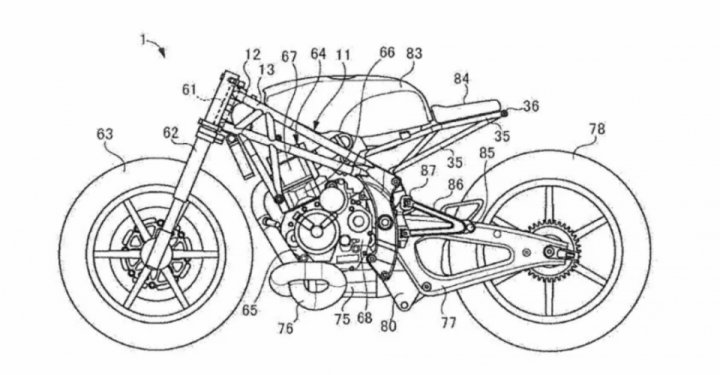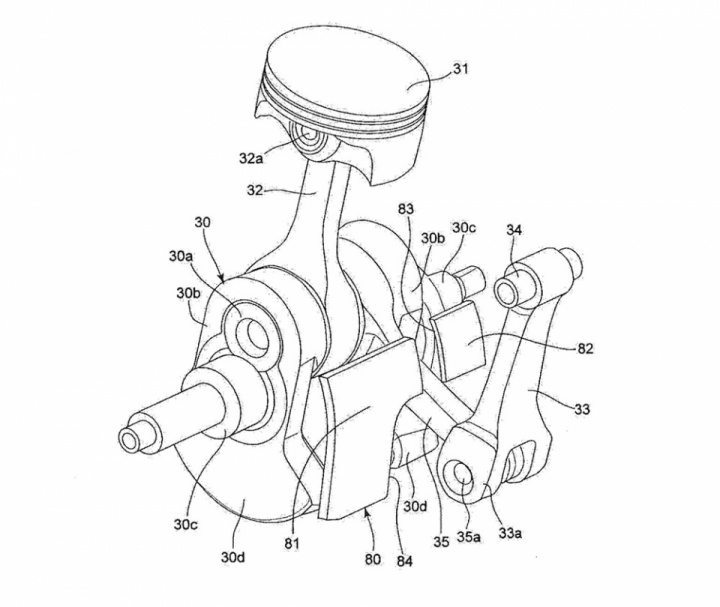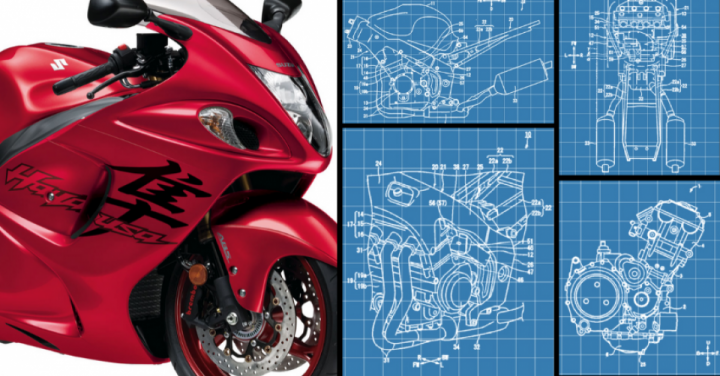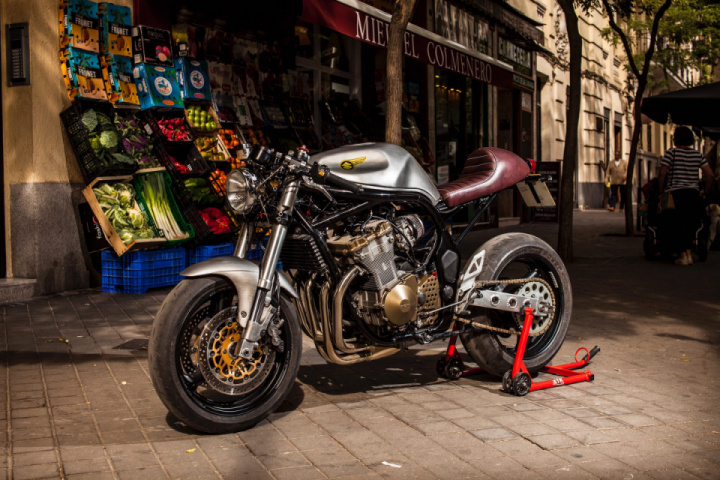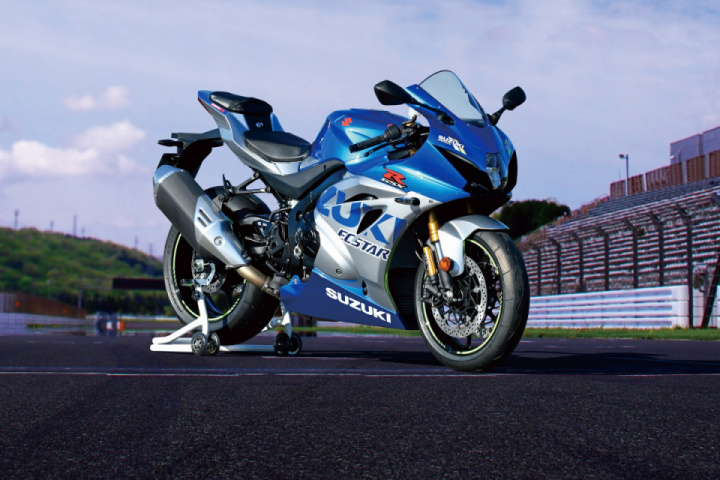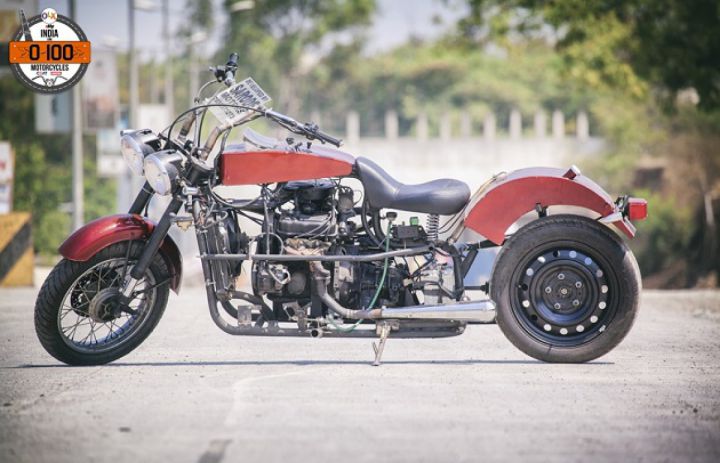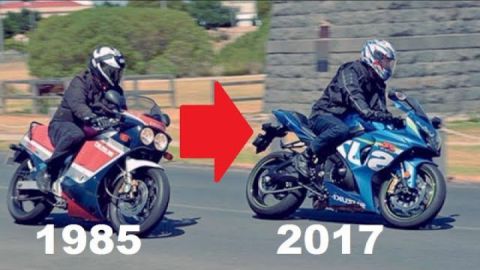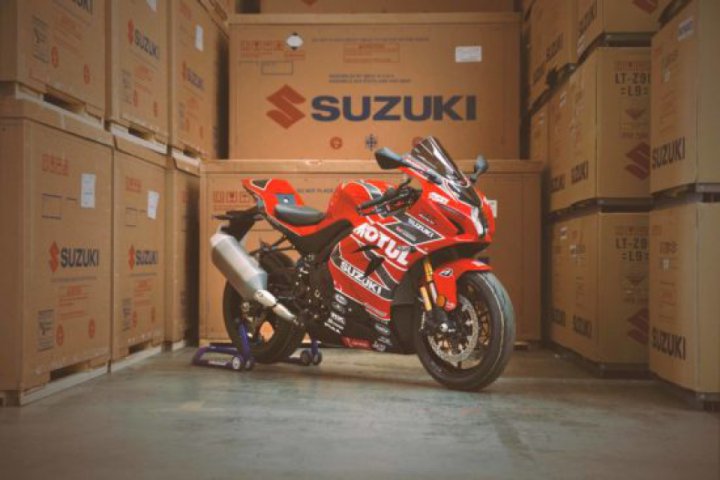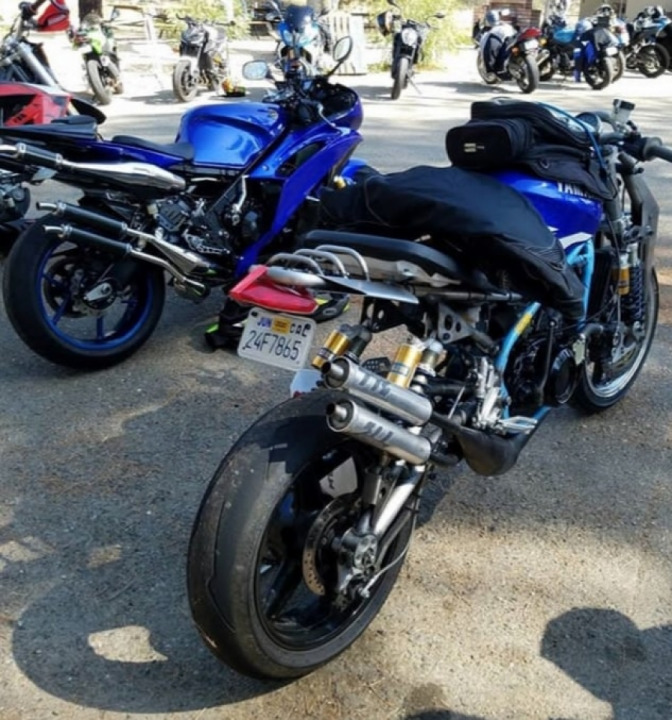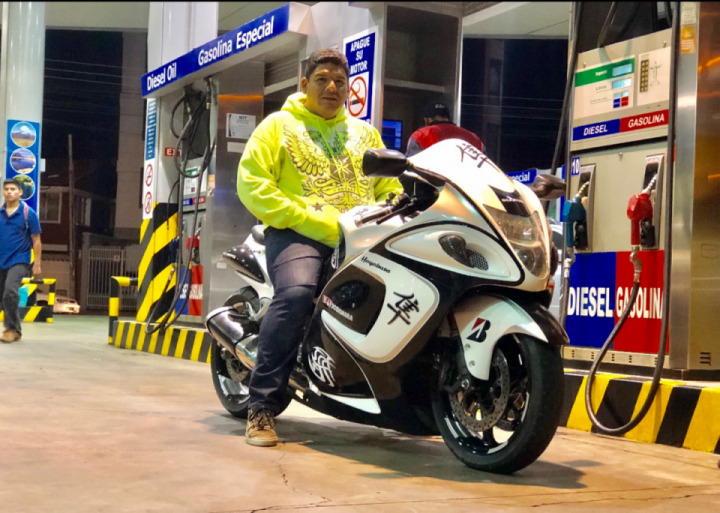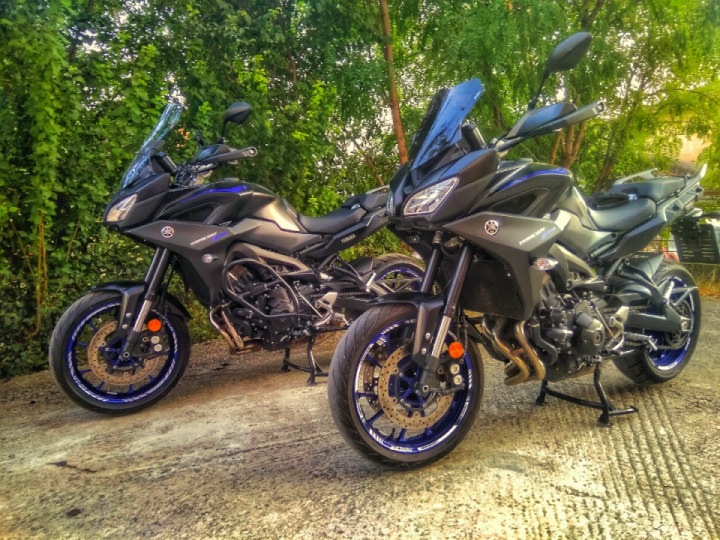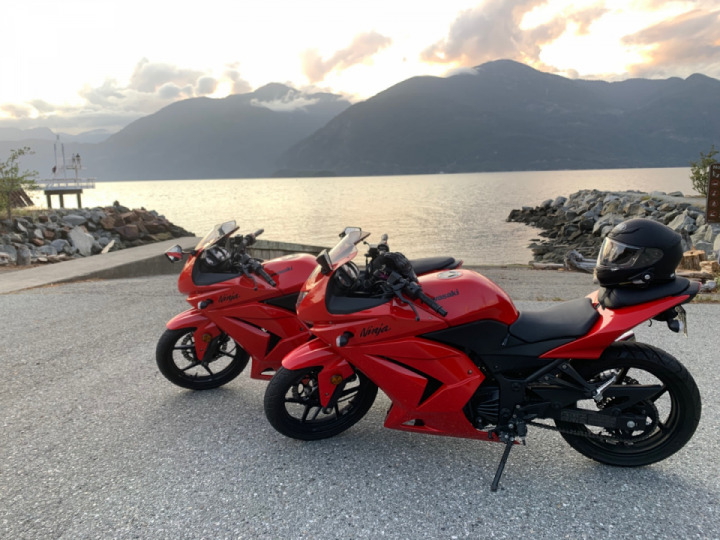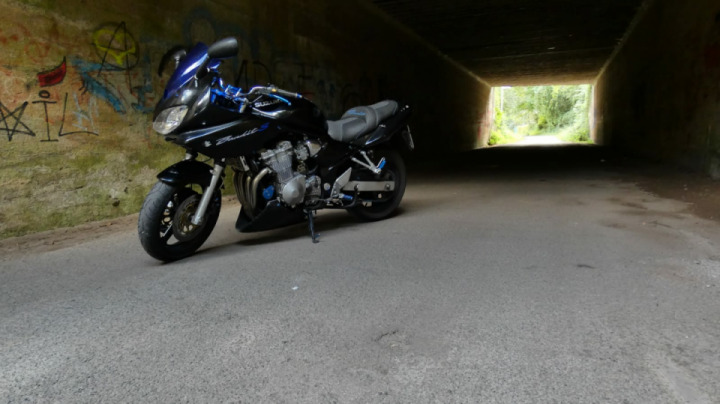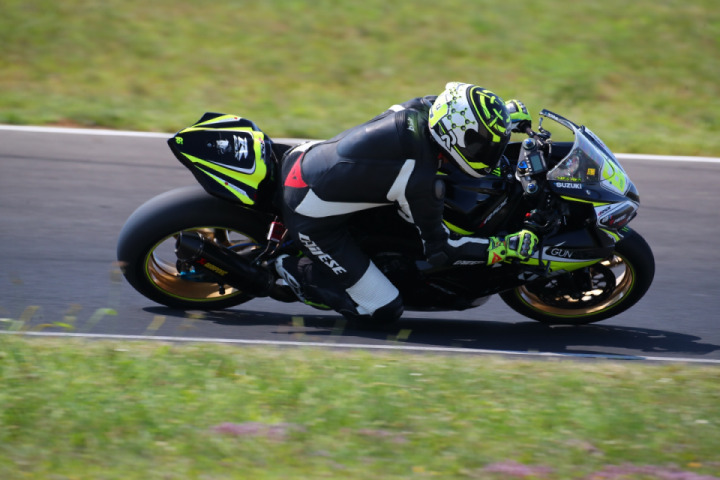
-
 Set of 3 stickers Suzuki GSX-S 1000 "Ram"
Set of 3 stickers Suzuki GSX-S 1000 "Ram" -
 Hoodie "Lizard" inspired by Kawasaki ZX10R
Hoodie "Lizard" inspired by Kawasaki ZX10R -
 T-shirt BMW S1000RR “Spider” 2021
T-shirt BMW S1000RR “Spider” 2021 -
 Mug "Transformer" inspired by Kawasaki Ninja 300
Mug "Transformer" inspired by Kawasaki Ninja 300 -
 Mug BMW S1000XR "Wasp"
Mug BMW S1000XR "Wasp" -
 T-shirt Honda MSX125 Grom Life (Gen 2)
T-shirt Honda MSX125 Grom Life (Gen 2) -
 Mug "Rhino" inspired by Kawasaki ZX10R
Mug "Rhino" inspired by Kawasaki ZX10R -
 Mug Yamaha YZF R15 V3 "Transformer"
Mug Yamaha YZF R15 V3 "Transformer" -
 Hoodie BMW S1000RR "Shark" 15 -17
Hoodie BMW S1000RR "Shark" 15 -17 -
 T-shirt Yamaha YZF R1 “Cobra” 2007 2008
T-shirt Yamaha YZF R1 “Cobra” 2007 2008
Seems Suzuki’s long-running Recursion project is still in the works, but has taken on several different forms. (Suzuki Motor Corporation/)
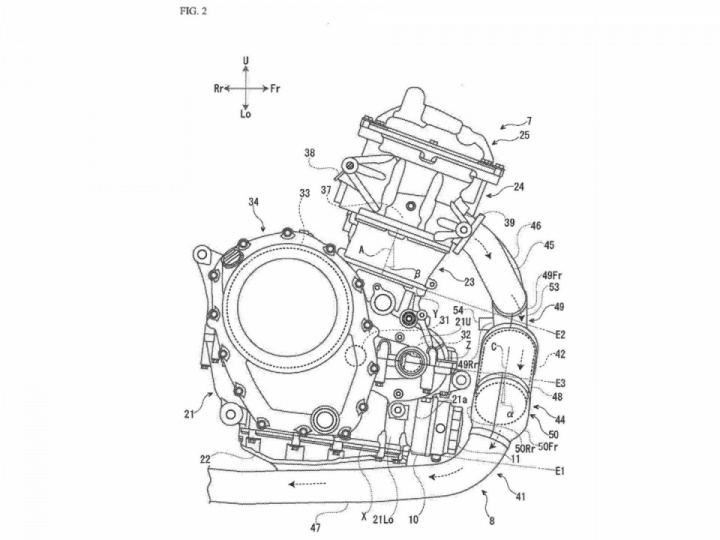
New models from Suzuki have been a rarity over the last few years, but a newly published patent shows that behind the scenes the firm is still working on the parallel-twin project it first hinted at with the Recursion concept nearly seven years ago.
It’s been a long and convoluted development path for the twin, which began life as the SOHC, 588cc, turbocharged unit in the Recursion in 2013 before mutating into the 700cc, DOHC XE7 engine that was shown two years later, still packing a turbo but otherwise completely redesigned. Since then, there’s been a stony silence from Suzuki but a steady drip of patents to show the project remains underway.
The last major redesign saw the SOHC turbocharged engine evolve into this DOHC 700cc XE7 (still with turbo). (Suzuki Motor Corporation/)
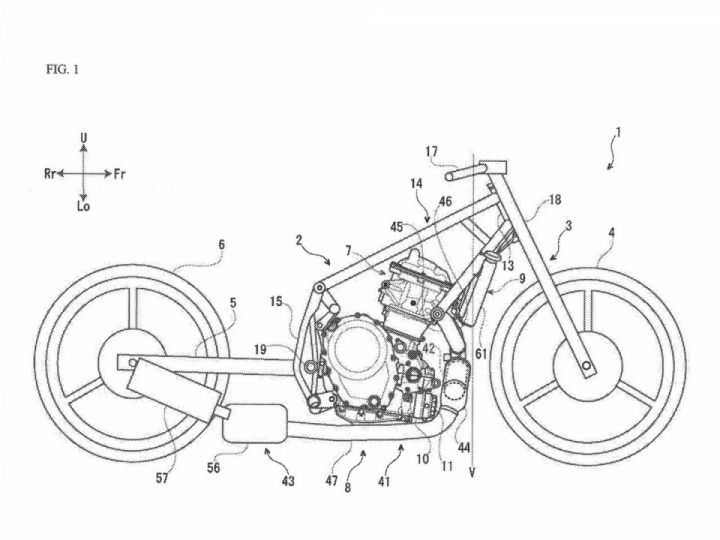
Where’s The Boost?
The latest patent from the company, filed in Japan last February but only published on August 20, 2020, is the first news we’ve seen on the Recursion project for a while, but reveals an interesting development—the turbocharger is gone.
Every previous patent about the new design featured the exhaust-driven blower, largely because that’s what led to most of the patentable technology. The turbo impacted the engine’s packaging, its airbox design, its cooling, and its exhaust; after all, apart from the short-lived mid-1980s Japanese efforts, turbos have been largely ignored by bike designers.
The new Suzuki patent, however, shows the XE7 engine shorn of its turbo and intercooler, adopting a much simpler, normally aspirated layout instead. That doesn’t mean the turbo version has been killed; it’s just that the boosted version has needed much more development, leading to all the patents that have kept us informed of its progress. The chances are that a normally aspirated version of the engine has always been part of Suzuki’s plan, but the more conventional design means it simply hasn’t required additional patents.
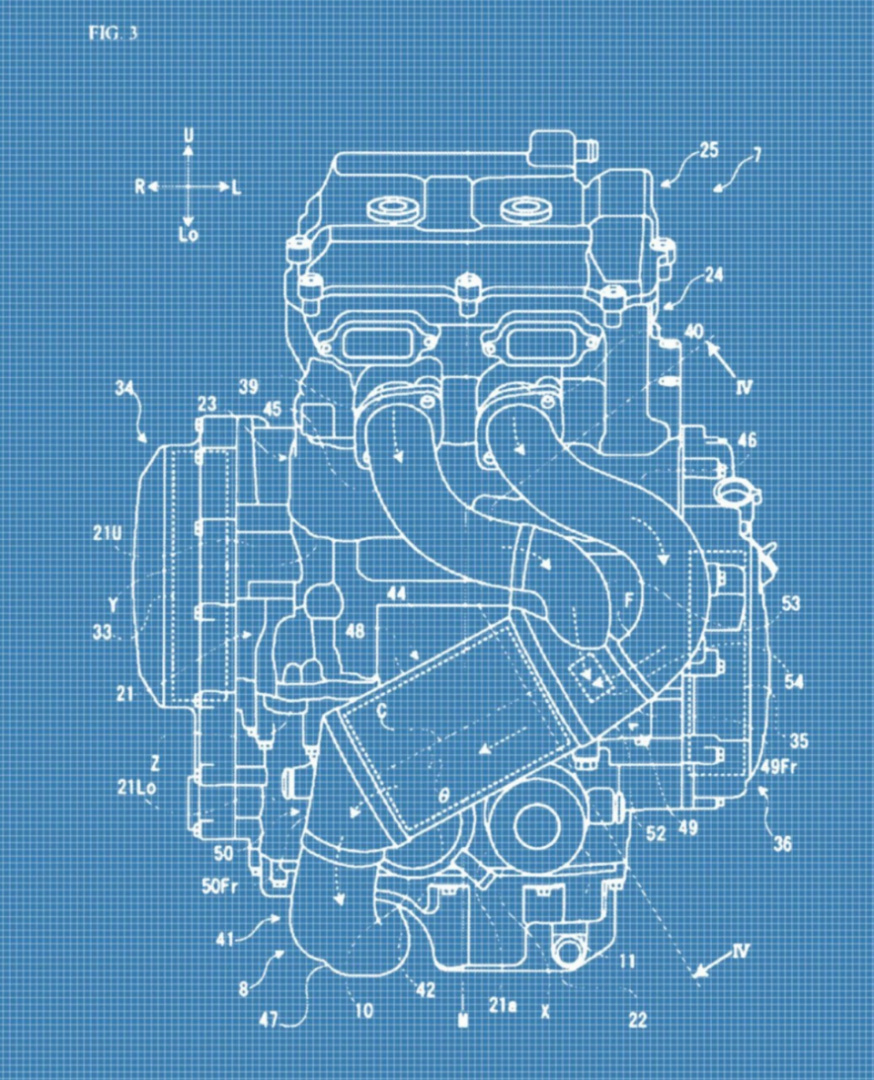
Newly obtained patents show the powerplant taking on a more basic, normally aspirated form. (Suzuki Motor Corporation/)
So What’s New Here?
In this instance, the patent relates simply to the layout and position of the catalytic converter, which is sited diagonally across the front face of the engine. The idea is that putting the cat at that angle locates it close to the exhaust ports to ensure it heats up quickly after the engine starts while also allowing it to be long and wide enough to be effective without sacrificing ground clearance like an under-engine design would.
The turbocharged version, which appeared in its own catalyst-related patents published last year, manages to use shorter header pipes leading straight into the turbo, with the catalyst fitted straight to the turbo’s exhaust and placed vertically down the front of the engine. Without the turbo, the exhaust header pipe lengths are more important to the engine’s performance and power delivery, needing to be longer than those used on the turbo version, hence the repositioned catalytic converter.
Without a turbo, the normally aspirated engine has to accommodate longer header pipes and reposition the cat. (Suzuki Motor Corporation/)
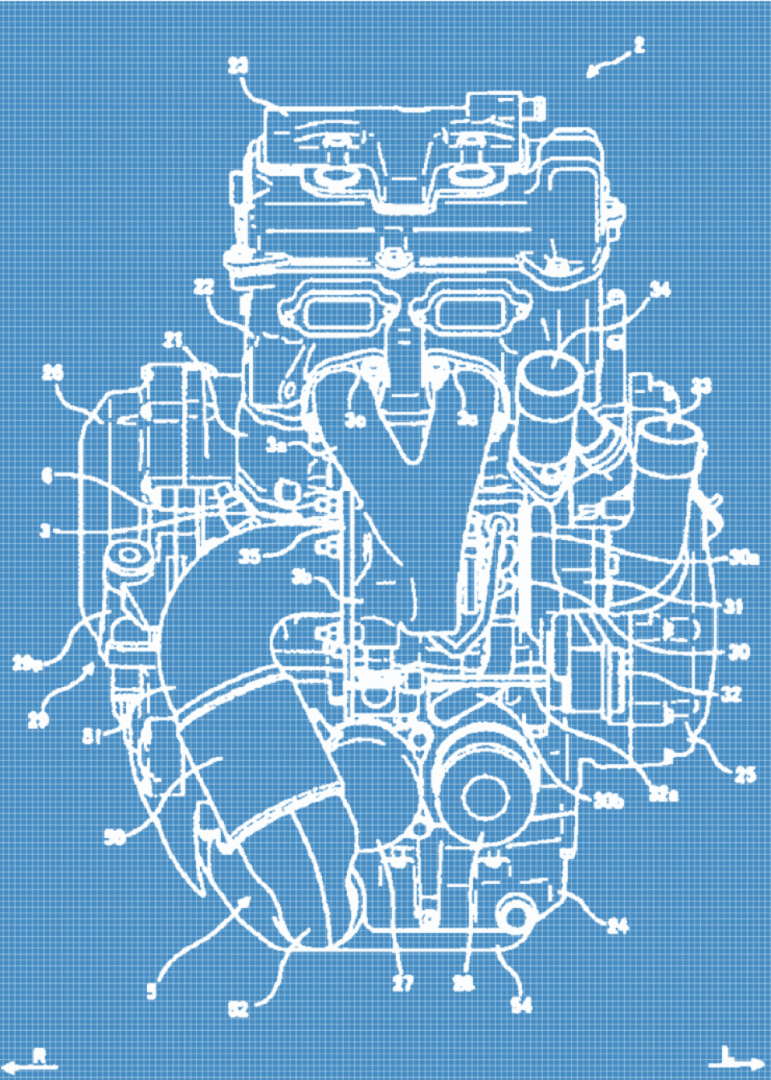
How Will The Non-Turbo XE7 Stack Up?
With its roughly 700cc capacity and parallel-twin layout, the new Suzuki twin is likely to be a rival to the likes of Kawasaki’s Ninja 650 and Z650 models and Yamaha’s MT-07, with about 80 hp on tap.
As such, the engine looks like a viable replacement for the ancient 650cc V-twin used in the SV650 and V-Strom 650. As well as having a cleaner, more modern design than the V-twin SV650 engine—which can trace its roots back more than 20 years—a parallel twin cuts down on the component count when compared to a V-twin design, with half the number of camshafts and a simpler cam drive system, to reduce manufacturing costs. It’s also easier to package in a bike, simplifying exhaust routing and eliminating longstanding V-twin problems like how to mount the rear shock away from the rear cylinder head and its exhaust heat.
With Honda’s CB500 range, Kawasaki’s 650s, and Yamaha’s MT-07 and Ténéré 700 all enjoying the advantages of the parallel-twin layout for their midsize machines, Suzuki’s V-twin design has become an outlier. The firm is clearly looking to follow the same route as its rivals in the future.
The new parallel twin under development could reduce manufacturing costs and replace Suzuki’s aging SV650 V-twin engine. (Suzuki Motor Corporation/)
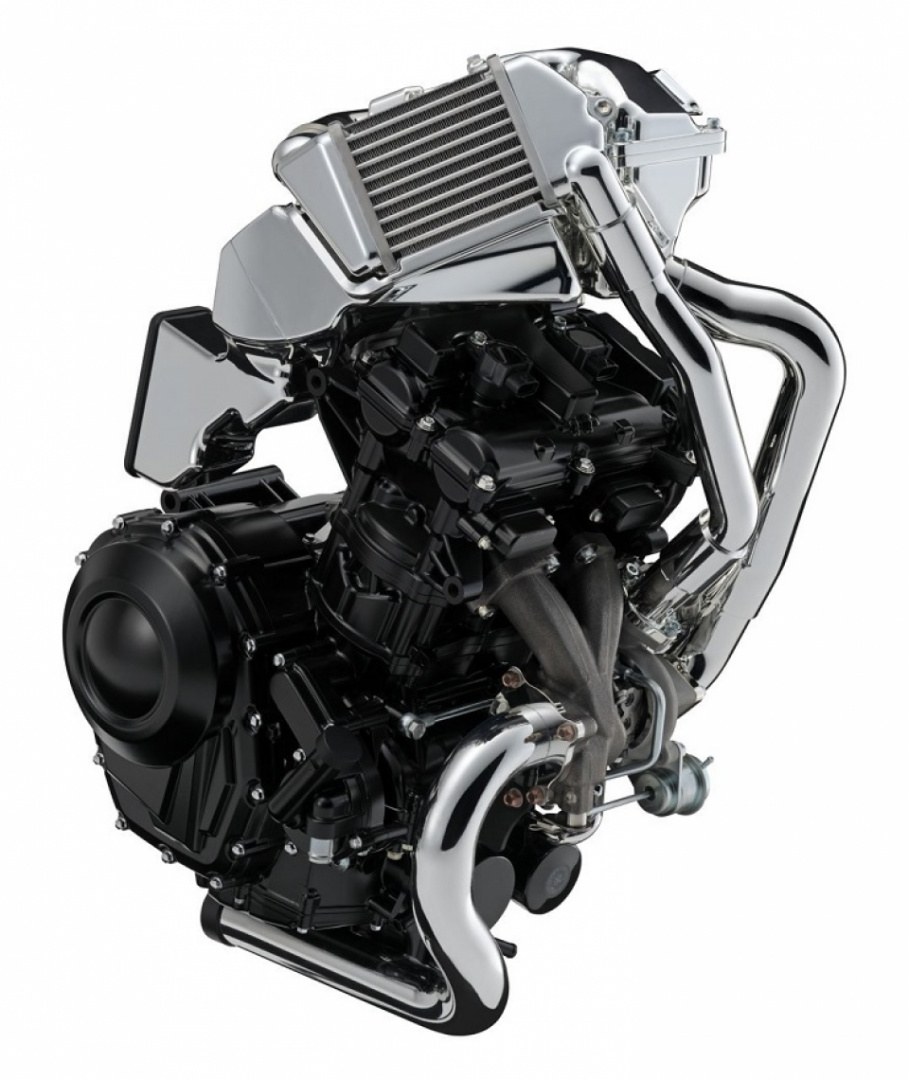
What About The Turbo Version?
With patent activity still ongoing, the turbocharged version of Suzuki’s new parallel twin remains a live project even seven years on from the original Recursion concept bike’s debut at the Tokyo Motor Show.
Original Source [newsopener]


